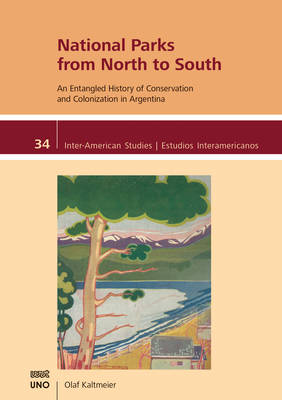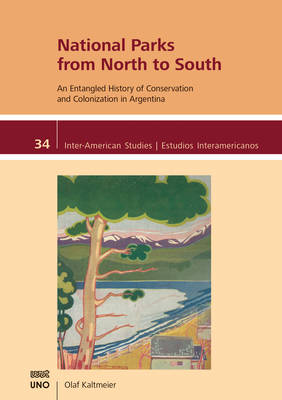
- Afhalen na 1 uur in een winkel met voorraad
- Gratis thuislevering in België vanaf € 30
- Ruim aanbod met 7 miljoen producten
- Afhalen na 1 uur in een winkel met voorraad
- Gratis thuislevering in België vanaf € 30
- Ruim aanbod met 7 miljoen producten
National Parks from North to South
An Entangled History of Conservation and Colonization in Argentina
Olaf KaltmeierOmschrijving
The establishment of national parks in Argentina - the first ones in Latin America - takes place in a transnational space of entanglements where ideas, imaginaries, people, biota and artefacts circulate. Park concepts in Argentina are influenced by a wide range of different approaches from U.S.-American Park politics through French landscape architecture and Prussian sustainable forestry to international debates on nature conservation. While national parks are today regarded as hoards of wilderness, contemporary interpretation in the first half of the 20th century is quite more open. In Argentina, a position has prevailed that sees national parks as "real instruments of colonization." Agricultural colonization and the expulsion of indigenous peoples, broad programs of urbanization and touristification of landscape as well as the massive processes of biological colonization by salmon, roe deer and Douglas fir are integral elements of Argentine Park politics. Especially in the emblematic National Parks of Nahuel Huapi and Iguazú. In this context between conservation and colonization, the book explores the following question: How do national parks operate?
Specificaties
Betrokkenen
- Auteur(s):
- Uitgeverij:
Inhoud
- Aantal bladzijden:
- 210
- Taal:
- Engels
- Reeks:
Eigenschappen
- Productcode (EAN):
- 9781608012046
- Verschijningsdatum:
- 7/01/2021
- Uitvoering:
- Paperback
- Formaat:
- Trade paperback (VS)
- Afmetingen:
- 145 mm x 208 mm
- Gewicht:
- 272 g

Alleen bij Standaard Boekhandel
Beoordelingen
We publiceren alleen reviews die voldoen aan de voorwaarden voor reviews. Bekijk onze voorwaarden voor reviews.











